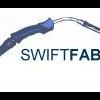
What Exactly Does Acoustic Wadding Do?
#1

Posted 03 February 2011 - 05:09 PM
Is it something to do with reducing air movement within the enclosure, or slowing down the back wave of the sound?
#2

Posted 03 February 2011 - 05:15 PM
But google found this
How does damping work?
In a sealed enclosure the driver moves in and out some distance. Multiplying the displacement distance by the surface area allows us to determine the volume of air pushed. While the front side of the woofer pushes air molecules which fill our listening areas with sound, the air in a sealed enclosure is compressed and expanded with the inward and outward motion of the driver. To more simply describe the situation in the box, we see that the quantity of air molecules in the box is fixed (it's sealed), while the motion of the driver's cone changes the volume of the sealed box.
Going back to the ideal gas laws, when you compress a volume of air, the temperature will increase. Similarly, when you increase the enclosure volume of a sealed enclosure, the temperature will reduce.
We generally stuff low frequency enclosures with insulating materials, most commonly fiberglass. The idea is that the fibers or other material helps to absorb some percent of the heat generated by the compression of the air in the enclosure. This heat is then released during the expansion half of the cycle. This is known as isothermal operation (temperature stays the same). As stated earlier, all heat is not absorbed, but the degree to which this occurs is referred to as isothermal operation.
With some percentage of heat absorbed the trapped air does not change in pressure as much as an unstuffed volume. In fact, it behaves like a slightly larger volume. In theory, this phenomenon could provide an apparent increase in volume of ~40%. As noted by Vance Dickason in the Loudspeaker Design Cookbook, practical limits with real materials tend to max out at about a 20% apparent gain (going from memory here-number may be slightly diff). With a sealed system this results in a lower Fb and lower Qb.
When stuffing is placed in a sealed box there is also resistive damping to varying degrees depending on the material. In a very old message to the DIY Bass List by NHT founder/designer Ken Kantor he noted his observations that in a real box it is common to see roughly equal parts resistive damping and isothermal operation. (check the bottom of this page for an archive of one of these posts)
Read more: Acoustic stuffing material - Home Theater Forum and Systems - HomeTheaterShack.com
#3

Posted 03 February 2011 - 05:17 PM
Placement and installation can make or break an ICE system and sometimes you have to play around until you find the perfect setup
#4

Posted 03 February 2011 - 05:18 PM
Doesnt explain why bass frequency apparently increases though?
#5

Posted 03 February 2011 - 05:21 PM
Andy
#6

Posted 03 February 2011 - 05:34 PM
Theres also varying types, the polyester stuff that is most common is regarded to be of the worst, with the best being long fibred materials such as fibreglass insulation. The quantity should be just added until no audible resonation can be heard, this way you can get the right amount without removing excess enclosure volume.
In your application, i would assume the frequency has changed due to removing the resonating frequencies, however i would have thought this would reduce the SPL of the enclosure but give you a far tighter sound?
Rich
#8

Posted 03 February 2011 - 05:46 PM
1 user(s) are reading this topic
0 members, 1 guests, 0 anonymous users


















